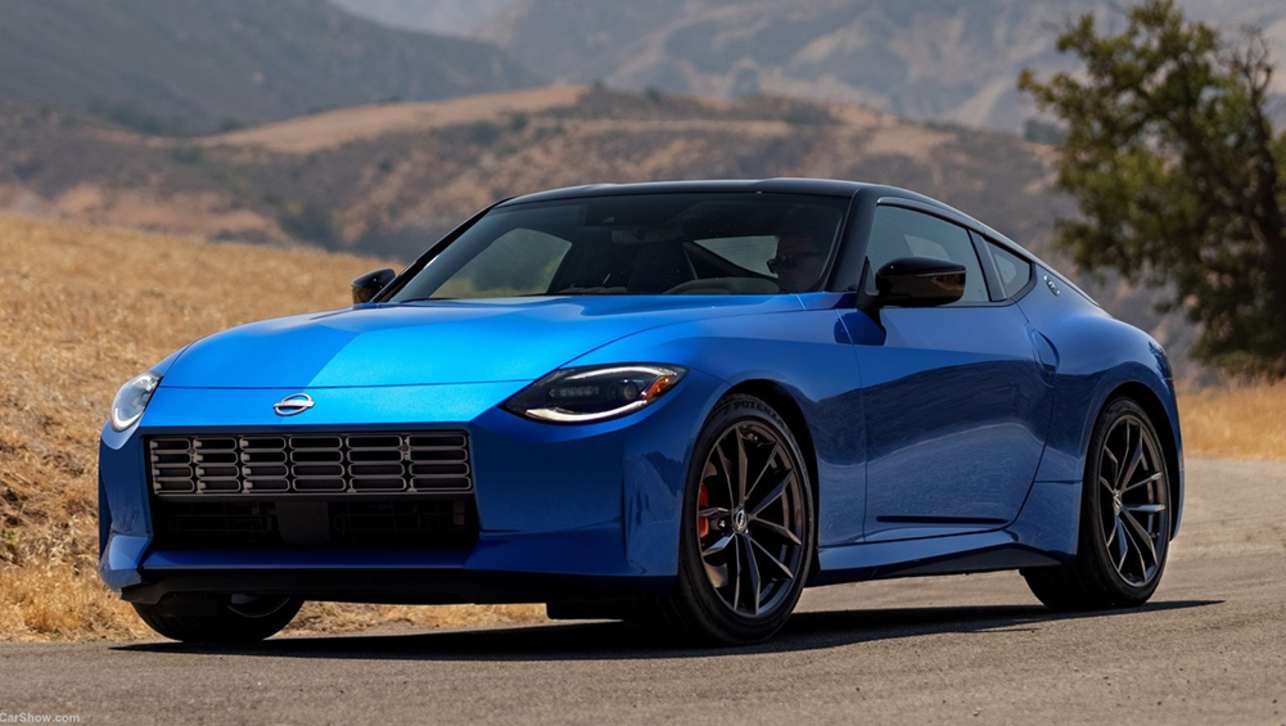It can’t be easy for a carmaker to conceive, design, engineer and launch an all-new model, only to find that it doesn’t quite hit the mark, runs out of sales puff, or finds itself looking old before too long.
Time for a top-hat redesign, with new clothes over an existing body. The basic architecture or platform underneath remains largely the same, to keep costs down. And why not? All-new engineering can be so prohibitively expensive that it takes years for a return on investment.
Inspired by the glow surrounding the new Nissan Z, we take a look at several other examples of a redesign that commercially and/or critically eclipsed the original – and some by a massive margin.
Sometimes, the second (or third) time’s a charm.
Nissan Z (2022-)
.jpg)
Based on: 2009 Z34 370Z
Nissan’s most famous sports car, the Z/Fairlady, created a huge stir when the fifth-generation Z33 350Z revived the nameplate in 2002. Bold, brutish and photogenic, it proved to be a huge success globally.
Massive things were also expected of its more-sophisticated follow-up, the redesigned Z34 370Z of 2009. Lighter, sharper and with a much shorter body, it was meant to be a purer sports car experience, but it simply never fired. Fussy styling didn’t help.
Enter the 2022 Z. We’ve just learned that this is a clever reskin of the 370Z, sitting on the same Z34 platform (so keeping the same codename) and even employing a carryover basic body structure, but with all-new skin that deftly evokes past ‘Zed’ greats, from the 1969 240Z original through to the ambitious Z32 300ZX of the 1990s.
Yes, we know sales haven’t started yet, but the unexpectedly positive reaction to the retro design, combined with strong anticipation ahead of its launch, suggests that the latest Z should at least see a sizeable revival.
Holden VT/VX Commodore (1997-2002)
.jpg)
Based on: 1978 VB Commodore
The elegant, Opel-designed first-generation VB Commodore of 1978 proved popular initially, but that waned against the altogether-bigger Ford Falcon as the ‘80s progressed.
But while the larger, 1988 VN Commodore redesign caught up, it wasn’t until the handsome VT Commodore launched nine years later that Holden streaked ahead, utterly destroying the AU Falcon to emphatically claim the number one spot.
The tenth version of the Commodore over 19 years, the VT’s V-car platform remained essentially the same, albeit in an evolved state with wider tracks and both sedan and wagon versions scoring a standard independent rear end instead of the solid-axle that had served all Commodores through VB/VC/VH/VK/VL/VN. The relatively basic semi-trailing arm rear suspension design had of course been optional across VP/VR/VS models after being introduced with the VQ Statesman, but it would be another five years before arch-rival Ford Falcon could offer independent rear suspension across the board on sedan models. Falcon-based wagon and ute models would retain the utilitarian leaf-spring, solid rear axle until their respective demises.
Inspired in part by the incredible success of the VT and its mildly updated successors, Holden wouldn’t end up engineering an all-new Commodore until the ‘Billion Dollar Baby’ VE launched in 2006 – a car GMH engineering boss Tony Hyde said at the time was the first completely-new big Holden since the 1971 HQ.
Holden LC/LJ Torana ‘6’ (1969-1974)
.jpg)
Based on: 1967 HB Torana
Technically a rehash of the tippy-toed 1964 Vauxhall HA Viva with a larger body, wider tracks and coil-sprung rear suspension, the UK designed and developed HB Torana of 1967 was GMH’s first Holden-badged small car, and quickly became one of Australia’s most popular four-cylinder models.
Though essentially a local redesign from the B-pillar back, the LC Torana from late 1969 changed everything with the option of six-cylinder engine models. Boasting a longer nose, stretched wheelbase and uprated suspension, the newly-acquired proportions better suited the LC’s fashionable Coke-bottle hipped silhouette, and sold up a storm.
The best was yet to come, though. Buoyed by outstanding motor racing success and high-performance GTR models, including the iconic GTR XU-1, the LC and its lightly-facelifted LJ successor of 1972 are now among the most legendary vehicles ever made in Australia. All from humble Vauxhall Viva beginnings.
Sadly, the all-new and much larger 1974 LH Torana failed to have the same impact commercially.
Ford Mk1 Focus (1998-2004)
.jpg)
Based on: 1990 Mk5 Escort (Europe)
The original Ford Focus could not look, feel or drive any more differently than its underperforming predecessor, the Ford Escort – but the architecture underneath was largely shared despite different suspension systems.
In dreary Mk5 guise launched in Europe in 1990, the Escort had struggled to hit the sales heights of earlier versions. These were the days of the Australian-made, Mazda 323-based Ford Laser so we missed out altogether.
For the 1998 Focus that we eventually saw as the LR series (Laser Replacement) in 2002, Ford ripped up the rule book with sharp new lines, a now-fashionable high-roof shape, sophisticated multi-link rear suspension and a bold cabin. It went on to be the world’s bestselling car during the 2000s.
It wasn’t until the larger and wider second-generation Focus of 2004 that the old Escort connection was finally ditched, by switching to Ford’s all-new C1 architecture shared with the 2003 Mazda3 and Volvo S40/V50, among other models.
Ford BA/BF Falcon (2002-2008)
.jpg)
Original model: 1998 AU Falcon
Ford spent $700 million developing the 1998 AU Falcon, but it famously flopped against the more conservative but better-looking Holden VT Commodore launched a year earlier – even though many critics hailed the Ford as the better car.
By the first half of 2002, Falcon sales were half that of Commodore, justifying a $500 million investment to create the restyled BA Falcon. Inspired by the Audi A4, the lines became squared off, the interior was completely redesigned, engines were upgraded and new steering and (sedan only) rear suspension systems were devised. Only the doors and wagon body carried over.
The result was a very different looking and driving Falcon that went on to win awards and reverse the model’s falling fortunes (temporarily as it turned out), but the AU’s platform still remained much the same – right through to the last Aussie-built FGX Falcon in 2016.
Porsche 944 (1982-1991)
.jpg)
Original model: 1976 Porsche 924
Most people know that the 924 started out as a joint venture between Volkswagen and Porsche to create a flagship coupe for the former and an entry-level sports car for the latter.
But VW reneged, so Porsche launched its first front-engined model in 1976, with a dull 2.0-litre four-cylinder engine offering disappointingly gruff character and feeble power.
Later turbo versions improved that, but it wasn’t until the wider tracked, fatter-bodied and far-more muscular-looking 944 burst on to the scene in 1982, restoring the faith in the doubters who pined for greater performance, handling and theatre that the 924 could deliver. Yet the platform was essentially shared, as were the bonnet, glass, doors, roof, hatch and interior.
The 924 petered out as the poor relation by the late ‘80s, with the 944 coming to represent the wealth and prosperity of its era for decades to come. What a transformation.
Mazda FA4 323 (1977-1980)
.jpg)
Original model: 1971 Mazda 808
The first 323 was a turnaround car for Mazda, after suffering falling sales and rising debt as a result of its over-reliance on thirsty and unreliable rotary-engine models like the RX-2 and RX-4 in the 1970s.
What it delivered was a simple, dependable and durable small hatchback that looked fresh and contemporary, in an era when the revolutionary VW Golf was changing the way people considered small cars.
But underneath that modern and friendly exterior were the underpinnings of the old 808 – itself a development of the 1970 1300 Familia range – complete with rear-wheel drive and a tight cabin. The FA4 323 was merely an interim car while Mazda developed its first volume front-drive model that was to also become the Ford Laser.
Still, it was just the elixir needed for Mazda to trade itself from near-bankruptcy, with nearly 900,000 sold until the all-new BD 323 landed in 1980. A huge success.


-2.jpg)





.jpg)

.jpg)
.jpg)


.jpg)
.jpg)

.jpg)
.jpg)

.jpg)

.JPG)
.jpg)

.jpg)

.jpg)




Comments